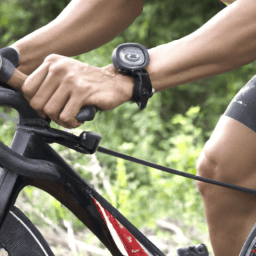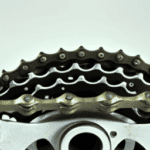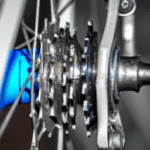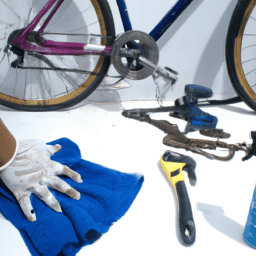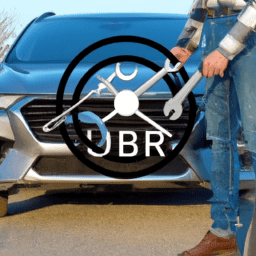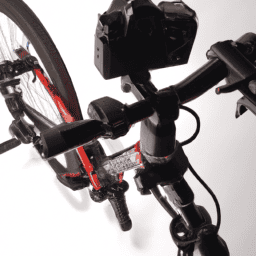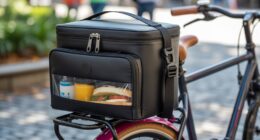Regarding cycling, ascending can be one of the most daunting tasks. As someone who cycles, I’ve faced numerous uphill journeys that made me struggle for air and fight to keep pedaling. Yet, I’ve discovered that having the appropriate equipment can make climbing hills a less daunting task and can even turn it into a pleasurable experience.
Understanding bike gearing is essential to choosing the right gear when going uphill. As a cyclist, I have come to learn that the gear ratio determines how much force is needed to turn the pedals and move the bike forward. Therefore, selecting the right gear for your body strength and the terrain can make all the difference in your uphill ride.
In this article, I will delve into the factors to consider when choosing the right gear, which gears to use when going uphill, and tips for improving your uphill cycling.
Key Takeaways
- Understanding bike gearing is essential to choosing the right gear when going uphill.
- Choosing the right cadence is crucial, typically between 60-80 RPM for uphill climbs.
- Shifting to a lower gear before the climb can help maintain speed and momentum.
- Proper body positioning, breathing techniques, and efficient pedaling are crucial for conquering uphill cycling challenges.
Understanding Bike Gearing
If you’re not sure which gear to use when going uphill on your bike, understanding bike gearing can make a big difference in your ride!
Gear ratios are the key to understanding how your bike gears work. In essence, the gear ratio refers to the relationship between the number of teeth on the front chainring and the number of teeth on the rear cassette.
The greater the number of teeth on the chainring, the harder it will be to pedal, but the faster you will go. Conversely, the greater the number of teeth on the rear cassette, the easier it will be to pedal, but the slower you will go.
Shifting techniques are also important to consider. When shifting gears, you want to make sure that you’re shifting smoothly and at the right time. If you shift too early or too late, you may find yourself struggling to maintain your speed or even losing momentum.
The benefits of lower vs higher gears depend on the terrain you’re riding on. If you’re climbing a steep hill, you want to be in a lower gear so that you can maintain a steady cadence without exhausting yourself. On the other hand, if you’re riding on flat terrain, you can use higher gears to maintain a faster speed with less effort.
Understanding bike gearing takes practice, but it’s an essential skill for any cyclist.
When choosing which gear to use when going uphill on your bike, there are several factors to consider. These include the gradient of the hill, the length of the climb, and your own physical abilities.
By understanding these factors, you can choose the right gear for the job and make your ride more enjoyable.
Factors to Consider When Choosing Gear
When deciding on the appropriate gear, it’s important to keep in mind the age-old adage, ‘slow and steady wins the race.’ This is especially true when it comes to uphill cycling.
When facing a hill, it’s important to analyze the terrain and choose the gear ratio that will allow for a steady and consistent pace. Factors to consider include the steepness of the hill, the length of the climb, and the rider’s personal fitness level.
Gear ratios play a crucial role in uphill cycling. A lower gear ratio provides more torque and allows for easier pedaling, but at a slower speed. On the other hand, a higher gear ratio provides more speed but requires more power to pedal.
When analyzing the terrain, a rider should choose a gear ratio that allows them to maintain a steady pace without putting too much strain on their muscles. With this in mind, let’s dive into which gears to use when going uphill.
Which Gears to Use When Going Uphill
When going uphill on my bicycle, I need to consider the gears I use in order to maintain my speed and momentum. By selecting the appropriate gear, I can conserve energy and avoid unnecessary fatigue.
It’s important to understand how to properly shift gears to optimize my cycling performance and make the uphill ride more manageable.
Maintaining Speed and Momentum
To keep your speed and momentum while going uphill on a bicycle, it’s important to pedal continuously and shift to a lower gear before the climb. This will help keep your effort balanced and allow for a smoother shift. Choosing the right cadence is also crucial, as it will help you maintain your speed without burning out too quickly.
A cadence of around 60-80 RPM is recommended for uphill climbs. When shifting to a lower gear, make sure to do it smoothly to avoid any jarring movements that may slow you down. It’s important to anticipate the climb and shift early so you don’t lose any momentum.
Pedal at a steady pace and try not to put too much pressure on your legs. Remember, it’s better to conserve your energy for the climb ahead. With these tips in mind, you’ll be able to maintain your speed and momentum on uphill climbs.
Conserving Energy
You can save your precious energy by pedaling smoothly and effortlessly, like a bird gliding through the air. One way to achieve this is by using cadence, which refers to the number of times you pedal per minute. When going uphill, it’s important to maintain a steady cadence, typically between 70-90 revolutions per minute (RPM). This allows you to pace yourself, distribute your energy more efficiently, and prevent early fatigue.
To help you understand the relationship between cadence and energy conservation, take a look at the table below. It shows the amount of energy expended per pedal stroke at different cadences. As you can see, the most energy-efficient cadence is around 80 RPM. At this cadence, you’re able to produce the most power with the least amount of effort. So, next time you’re faced with a steep climb, remember to maintain a steady cadence around 80 RPM to conserve your energy and avoid unnecessary fatigue.
| Cadence (RPM) | Energy per Pedal Stroke (Joules) |
|---|---|
| 60 | 25 |
| 70 | 20 |
| 80 | 15 |
| 90 | 20 |
| 100 | 25 |
By using cadence and pacing yourself uphill, you’ll be able to conserve your energy and ride more efficiently. However, there are other factors to consider when avoiding unnecessary fatigue, such as proper gear selection and body positioning.
Avoiding Unnecessary Fatigue
Avoiding unnecessary fatigue while cycling requires a combination of factors, including proper gear selection, body positioning, and a steady cadence. One of the most important factors is reducing strain on the body.
When cycling uphill, it’s important to choose a gear that allows you to maintain a consistent pedaling cadence without straining your muscles. If you find yourself struggling to pedal and your legs are burning, you’re likely using too high of a gear. Shift to a lower gear to reduce the strain on your muscles and make it easier to maintain a steady pace.
Another key factor in avoiding unnecessary fatigue is pacing oneself. It’s easy to get caught up in the excitement of the climb and push too hard too soon. However, this can quickly lead to burnout and exhaustion. Instead, try to maintain a steady pace throughout the climb, focusing on your breathing and keeping your muscles relaxed.
By pacing yourself, you’ll conserve energy and be able to maintain a strong effort all the way to the top. With these tips in mind, let’s move on to some more specific advice on how to tackle uphill cycling challenges.
Tips for Going Uphill on a Bike
When it comes to going uphill on a bike, there are three key points to keep in mind: pedaling techniques, body positioning, and breathing techniques.
As someone who’s tackled many hills on my bike, I know the importance of mastering these three elements. By using the right pedaling techniques, maintaining proper body positioning, and employing effective breathing techniques, you can conquer even the steepest of inclines.
Pedaling Techniques
If you want to make it up that hill, try using the ‘spin to win’ technique, where you pedal at a faster cadence with lower resistance. This pedaling technique will allow you to conserve energy and maintain momentum as you climb uphill.
Here are four tips to master this technique:
-
Keep your feet level: Ensure that your feet are level and your pedal stroke is smooth. It’ll help you maintain consistent momentum and avoid wasting energy.
-
Focus on your cadence: Aim for a cadence of around 80-100 revolutions per minute (rpm). It’ll help you maintain a consistent speed and reduce the strain on your muscles.
-
Shift to a lower gear: Shift to a lower gear to reduce the resistance and maintain the desired cadence. This’ll not only make it easier to pedal but also reduce the strain on your knees.
-
Stay relaxed: Keep your upper body relaxed and avoid tensing up. This’ll help you maintain a steady rhythm and avoid losing momentum.
Now that you’ve mastered the pedaling technique, let’s move on to the next section about body positioning without losing any momentum.
Body Positioning
To maximize your speed and power on the bike, it’s important to maintain proper body positioning. Proper posture is key when tackling uphill climbs.
The first thing to keep in mind is to keep your upper body relaxed and your arms slightly bent. This will help you maintain control and avoid unnecessary tension in your upper body.
Next, shift your weight forward by moving your hips towards the front of the saddle. This will help you engage your leg muscles more efficiently, allowing you to generate more power with each pedal stroke. It’s also important to keep your back straight and your shoulders relaxed to prevent any unnecessary strain on your lower back.
Efficient pedaling is also crucial when it comes to tackling uphill climbs. Keep your cadence steady and consistent, and try to maintain a circular pedal stroke. This means applying pressure evenly throughout the entire pedal stroke, from the top to the bottom of the pedal stroke. By doing so, you’ll be able to generate more power with each pedal stroke, which will help you maintain your momentum and speed.
As you transition into the subsequent section about breathing techniques, remember that proper body positioning and efficient pedaling are essential components of a successful uphill climb. By maintaining proper posture and pedal stroke, you’ll be able to conserve energy and tackle the hill with greater ease.
Now, let’s talk about how breathing techniques can help you take your climbing skills to the next level.
Breathing Techniques
You’ll be amazed at how much easier uphill climbs can feel once you’ve mastered proper breathing techniques. It’s not just about taking deep breaths, but also about incorporating relaxation techniques and mindfulness practices.
Here are four key components of effective breathing techniques when cycling uphill:
-
Breathe deeply and slowly: Inhale through your nose and exhale through your mouth, taking deep breaths at a slow and steady pace. This will help you maintain a consistent heart rate and avoid hyperventilating.
-
Relax your upper body: Tension in your upper body can hinder your breathing and make it harder to climb uphill. Focus on relaxing your shoulders and neck, keeping your arms loose and your hands lightly gripping the handlebars.
-
Use your diaphragm: Your diaphragm is a muscle located just below your lungs. To improve your breathing, focus on using this muscle to expand your lungs and take in more oxygen.
-
Be mindful of your breath: Pay attention to your breath and how it feels as you climb uphill. This will help you stay present and focused on the task at hand, rather than getting distracted by the difficulty of the climb.
By incorporating these techniques, you’ll be able to climb hills with greater ease and less fatigue. But the key to improvement is practice, so make sure to incorporate these techniques into your regular cycling routine.
Practice and Improvement
Want to get better at uphill cycling? Practice using different gears and focus on improving your pedal stroke. Uphill challenges can be daunting, but with the right training strategies, you can improve your performance and conquer any hill.
One effective training strategy is to practice using different gears. As you approach an uphill section, experiment with shifting into a lower gear to maintain a steady cadence. This will help you conserve energy and prevent burnout. Conversely, when you reach a flatter section or a downhill, shift into a higher gear and focus on maintaining a consistent pedal stroke. This will help you build strength and endurance, allowing you to tackle steeper hills with greater ease. By practicing these techniques regularly, you can improve your overall performance and become a more confident uphill cyclist.
To help you track your progress and stay motivated, consider creating a training log. In the left column, record the date, time, and location of your ride, as well as the distance you covered and the elevation gain. In the right column, jot down notes about your performance, such as how you felt during the ride, what gear you used on each hill, and any challenges you encountered. By reviewing your log regularly, you can identify patterns and areas for improvement, and adjust your training accordingly. With dedication and practice, you can become a stronger, more skilled uphill cyclist.
Frequently Asked Questions
How do I properly maintain my bike’s gears?
Maintaining my bike’s gears is crucial for optimal performance. I use lubrication techniques to keep them running smoothly and cleaning methods to prevent buildup. It’s important to stay knowledgeable about gear maintenance for a safe and enjoyable ride.
Can I use the same gear when going downhill as when going uphill?
It’s not recommended to use the same gear when going downhill as when going uphill. Proper technique and breathing are key to efficient uphill cycling. How to choose the right gear ratio for uphill cycling based on terrain is important for an enjoyable ride.
What is the difference between a compact and standard crankset?
When it comes to climbing, a compact crankset with smaller chainrings is better than a standard one with larger chainrings. This increases the gear ratio, allowing for easier pedaling. However, a standard crankset may provide more power for experienced riders.
How does altitude affect my gear choice when going uphill?
When cycling uphill at altitude, I adjust my gear to compensate for the decreased oxygen levels. I also consider the potential muscle fatigue and choose a gear that allows me to maintain a steady cadence without overexerting myself.
Is it necessary to change gears frequently when going uphill or can I stick to one gear?
When cycling uphill, it’s beneficial to alternate gears to distribute effort among different muscle groups. Sticking to one gear can lead to overuse injuries and fatigue. Varying gears also allows for a more efficient and controlled ascent.
Conclusion
So there you have it, folks. Understanding your bike’s gearing is crucial when it comes to tackling uphill climbs.
Factors such as gradient, terrain, and personal fitness level should all be considered when choosing which gear to use. Remember, it’s better to use a lower gear and spin your pedals faster than to struggle in a higher gear and risk injury.
But don’t let the technicalities of gearing overwhelm you. With practice and determination, anyone can improve their uphill cycling abilities.
So next time you’re faced with a challenging hill, take a deep breath, focus on your technique, and keep pushing yourself. The feeling of accomplishment when you reach the top is worth every pedal stroke.
Happy cycling!
